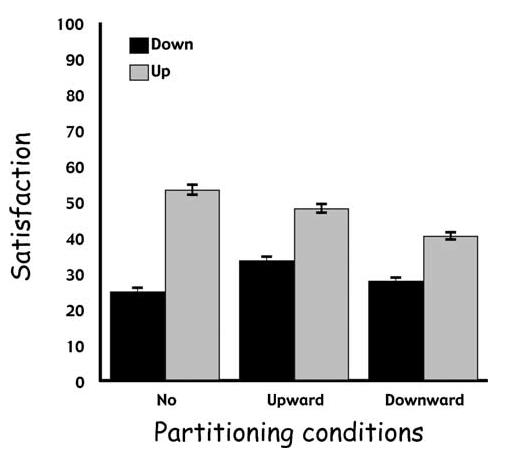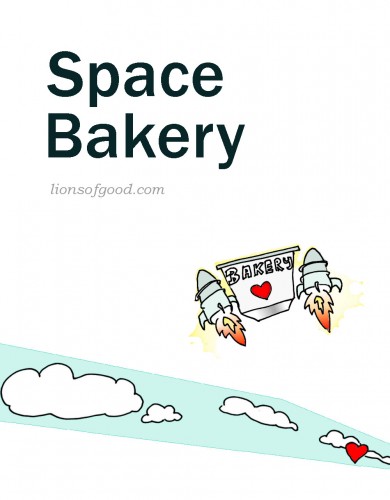
“I can explain…”
Some lovebirds annoyingly brag about “love at first sight”. But we all know how some romances can seem like a cosmic joke — like a slapstick comedy designed by God for his amusement.
The ingredients of a fiery but futile relationship are simple: introduce two people to each other at the peak of raging hormones, then give them just enough time for “feelings” to develop (possibly over a long vacation or life-changing event), then abruptly separate them via some unyielding force of life like career or higher education (or in the case of Romeo and Juliet, feuding families).
One example is the long-distance relationship: a torturous roller-coaster of longing and aching, accented with brief moments of molten passion when reunited temporarily. Then rinse and repeat until an inevitable climax of catastrophic failure. (Do these things ever work out?)
What makes these relationships so intense? What can we learn from them to create customers who are happy and excited to buy at premium prices, buy often and tell their friends?
As it turns out, what makes long-distance relationships so intense is also why make-up sex works. It’s the reason why sex feels like it “fixes” everything, regardless of how many knives or pots and pans went airborne earlier.
Would you like to know why?
There’s a simple but strange effect at work here, that behavioral psychologists are just discovering. The good news is they figured out what makes it work. Which means that finally, anyone can reliably design and engineer intense experiences… for good or evil. (Hopefully, you will use it for good.)
The reason is Experience Partitioning. Don’t worry, it’s simpler than it sounds…
You see, our experiences in life span certain periods of time. E.g., a movie lasts a few hours. A vacation can span 7 days. A romantic relationship: years, months, weeks, or… days. Research in human behavior and decision-making[1] made this discovery: How satisfied we are from any given experience is greatly influenced by how continuous the experience is, whether it’s trending up or down, how it’s broken up, and precisely when and where it’s broken up.
I’ll explain…

Given any experience, breaking the experience when it’s trending up vs trending down greatly affects overall satisfaction. On the left, the experience is broken at the peaks of intensity. On the right, the experience is broken at the troughs. (Results below.)

This graph from the research paper is more complicated than it should be, because it’s trying to show many things at once. But let me break it down. First, ignore the black bars. Let’s focus only on the light grey bars, which show the satisfaction from an improving experience.
The left-most bar shows the baseline satisfaction level when the experience is continuous. The middle and right bars show that satisfaction drops anytime you break up an increasingly satisfying experience. But, the right bar shows that satisfaction is killed the most when an experience is interrupted at the low points.
Next, ignore the light grey bars and focus on the black bars, which show the satisfaction from a downward-trending experience. The left-most bar shows the baseline score. The middle and right bars show that satisfaction from a declining experience can be improved by breaking it up, and the middle bar shows that you can improve a bad experience best when you break it up at the high points.
Cool, huh? If I lost you, here’s the Cliff notes: For any experience, you can make people happier simply by how you partition an experience (or not). Read on for a summary of the best way to partition them…
For single cohesive experiences, the intensity of the experience depends mostly on the trend — i.e., if it’s trending up or down. This is why if you’re watching a movie in one sitting, the movies that are most satisfying build up to a positive climax.
On the other hand, experiences chopped up into multiple smaller experiences don’t depend much on the trend at all. Instead, in multi-component experiences, we evaluate each part independently, then form an overall opinion by averaging what we feel about each part.
For instance, if you asked someone how a 3-part play went, she’ll first recall and score part 1, then mentally store it away. Then she’ll recall and score part 2, and store it away. Same with part 3. The final overall assessment will be the average of the three parts.
4 Keys to unforgettable customer experiences:
- Design increasingly satisfying sequences (upward trend always)
- Don’t partition improving sequences (don’t interrupt good times)
- If you must interrupt an experience, break at a high point
- End every experience at a high point
With this formula in hand, let’s go back and see why make-up sex and long-distance relationships are so exciting.
First, make-up sex. The fighting that happens earlier in the day is the low starting point, and sex at night is the high point. Sleep is what partitions the experience and ends the day. This gives the illusion that the trend was positive (it started low with fighting and ended high with sex). The experience is partitioned perfectly — a perfect storm to screw with your head and make you think things are better than they are.
What’s twisted about this formula is that the worse the fights are in the day and the more passionate sex is at night, the more in love you think you’ll be.
How about long-distance relationships? Let’s see: distance is the physical partition that breaks the experience. When the couple reunites, they hug, laugh, cry, kiss and make up for lost time. But as time progresses, intensity boils, because the reality of separation stalks them like a hungry vulture. Desperate desires smoulder, snap, crackle and pork until peak intensity… when the expected happens again — painful goodbyes, mauled hearts and crushed hopes.
See? Yet another experience perfectly partitioned for max intensity: separation, reunion, upward trend of increasing satisfaction during short time together, then snipped at the peak by abrupt separation.
So there you have it. Now you know how your brain tricks you into thinking you’re more in love than you are.
But more importantly, now you know the secret to design and manufacture mind-blowing experiences for the people you serve.
Go forth and satisfy.



Add your comment: